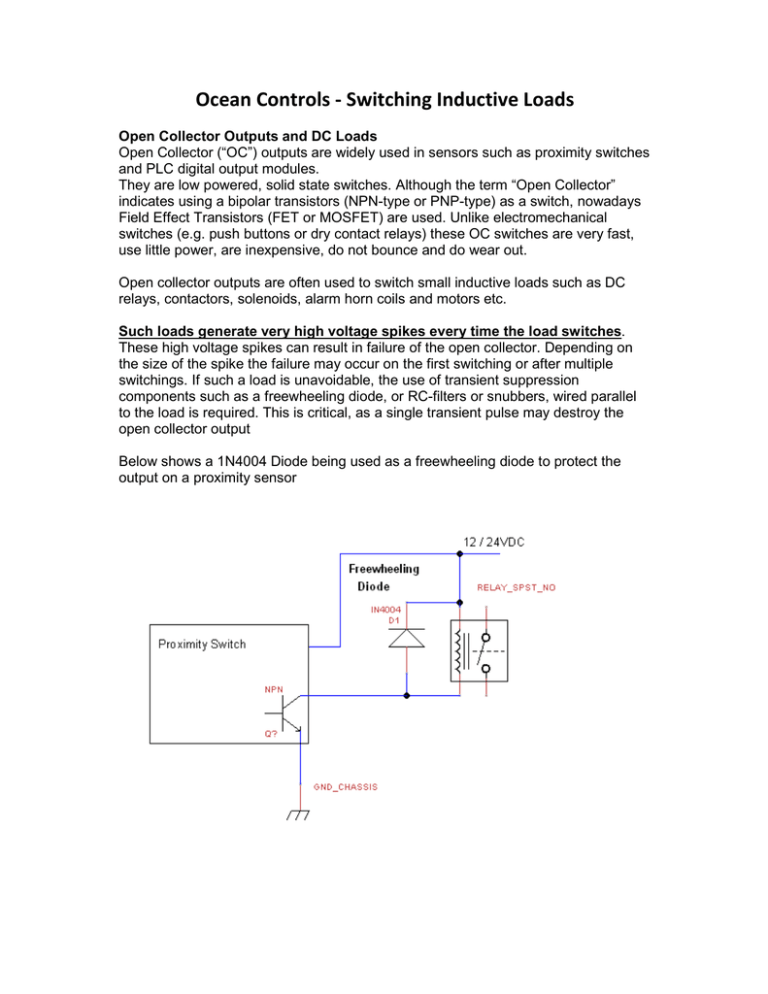Switching Inductive Loads with Open Collector Outputs
advertisement

Ocean Controls - Switching Inductive Loads Open Collector Outputs and DC Loads Open Collector (“OC”) outputs are widely used in sensors such as proximity switches and PLC digital output modules. They are low powered, solid state switches. Although the term “Open Collector” indicates using a bipolar transistors (NPN-type or PNP-type) as a switch, nowadays Field Effect Transistors (FET or MOSFET) are used. Unlike electromechanical switches (e.g. push buttons or dry contact relays) these OC switches are very fast, use little power, are inexpensive, do not bounce and do wear out. Open collector outputs are often used to switch small inductive loads such as DC relays, contactors, solenoids, alarm horn coils and motors etc. Such loads generate very high voltage spikes every time the load switches. These high voltage spikes can result in failure of the open collector. Depending on the size of the spike the failure may occur on the first switching or after multiple switchings. If such a load is unavoidable, the use of transient suppression components such as a freewheeling diode, or RC-filters or snubbers, wired parallel to the load is required. This is critical, as a single transient pulse may destroy the open collector output Below shows a 1N4004 Diode being used as a freewheeling diode to protect the output on a proximity sensor Switching AC Inductive Loads Open Collector (“OC”) outputs and freewheeling diodes are not suitable for switching AC loads so relay contacts are used. In order to minimise arcing and electrical noise a RC snubber is used. The diagram shows a typical snubber placed in parallel with the switching relay contacts.





